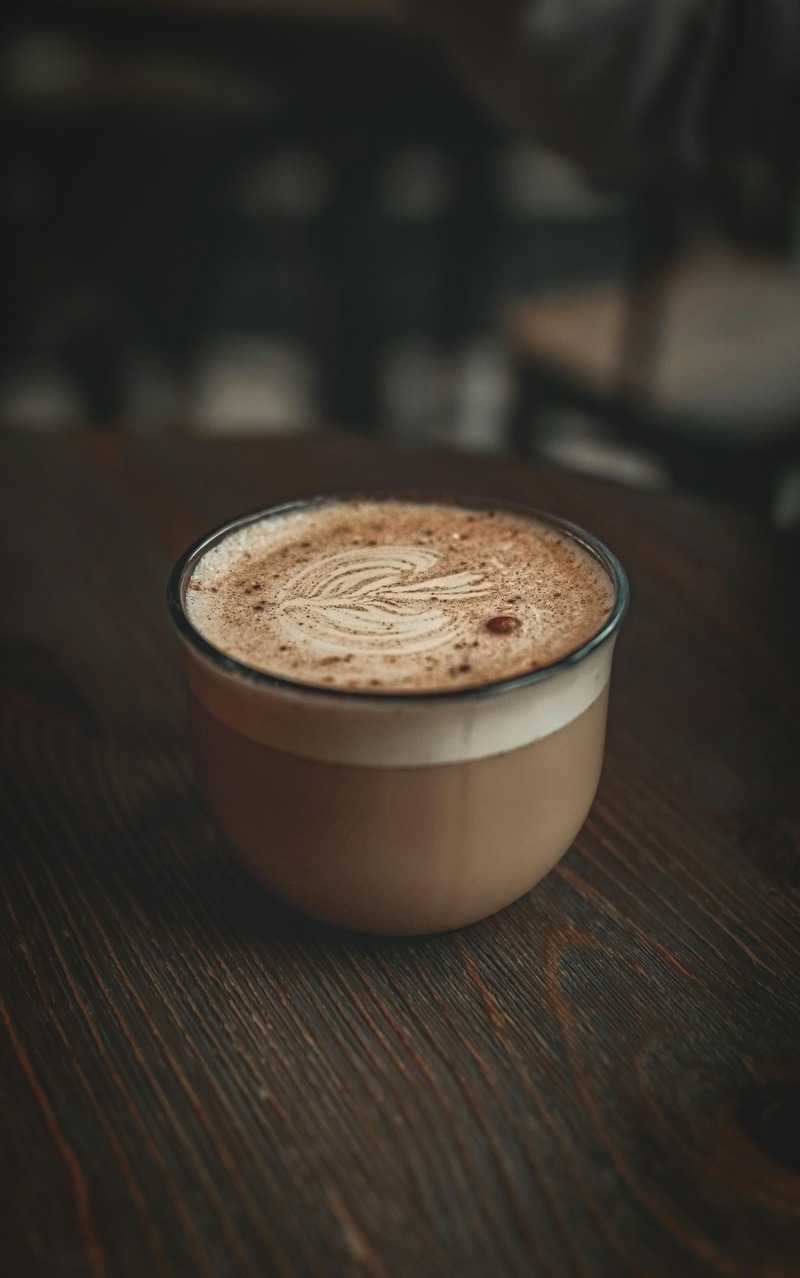How to Get Your Own Coffee Blend: A Complete Guide

Share
Welcome to the fascinating world of custom coffee blends! At The Crafted Cafe, we believe that every coffee lover deserves a brew that resonates with their unique preferences. Crafting your own blend isn't just about mixing different beans; it’s an art that requires understanding, experimentation, and a touch of creativity. The journey of creating your own coffee blend can be both exciting and rewarding, providing you with a brew tailored specifically to your taste.
Imagine waking up to a cup of coffee that you've meticulously crafted yourself, a blend that perfectly balances the flavors you love. Whether you're a fan of bold, dark roasts or prefer a light, fruity cup, the possibilities are endless when you embark on the journey of custom blending. Not only does this allow you to enjoy a personalized coffee experience, but it also gives you the chance to appreciate the nuances and complexities of different coffee beans from around the world.
Ready to dive into the world of custom coffee blends? Buy the freshest coffee on the internet now! and begin your journey towards creating a brew that's distinctly yours. Stay tuned as we guide you through each step of the process, from sourcing the finest beans to mastering the perfect blend.
Understanding Coffee Bean Varieties

Before diving into the process of creating your own coffee blend, it's crucial to understand the different coffee bean varieties. Each variety offers unique flavors, aromas, and characteristics that will influence your final blend. The two primary types of coffee beans are Arabica and Robusta.
Arabica beans are renowned for their smooth, complex flavors and vibrant acidity. They are often found in high-quality specialty coffees and are grown at higher altitudes. Arabica beans can offer a wide range of flavor profiles, from fruity and floral to nutty and chocolaty, depending on their origin and processing methods.
On the other hand, Robusta beans are known for their bold, robust flavor with a distinctive earthy and sometimes bitter taste. They contain higher caffeine levels compared to Arabica beans and are often used in espresso blends to provide a rich crema and a strong, full-bodied flavor. Robusta beans are typically grown at lower altitudes and are more resistant to pests and diseases.
Apart from Arabica and Robusta, there are other lesser-known varieties such as Liberica and Excelsa. Liberica beans are known for their unique, somewhat smoky flavor and larger bean size, while Excelsa beans, a sub-species of Liberica, offer a tart and fruity profile that can add complexity to a blend.
Understanding these varieties is the first step in crafting a custom blend that suits your taste. By experimenting with different beans, you can discover the perfect combination that brings out the best in each variety, creating a harmonious and satisfying cup of coffee.
Selecting the Right Coffee Beans

Once you have a solid understanding of the different coffee bean varieties, the next step is selecting the right coffee beans for your blend. This involves considering several factors, such as origin, processing methods, and roast levels, to ensure you achieve the desired flavor profile.
First, pay attention to the origin of the beans. Coffee-growing regions such as Ethiopia, Colombia, Brazil, and Vietnam each produce beans with distinct characteristics. For example, Ethiopian beans are often fruity and floral, while Colombian beans are known for their balanced acidity and nutty notes. Understanding the flavor profiles associated with different origins will help you choose beans that complement each other.
Next, consider the processing methods. The way coffee beans are processed after harvesting can significantly affect their flavor. The three main methods are washed, natural, and honey processes. Washed beans tend to have a cleaner, brighter taste, while natural process beans are often fruitier and more complex. Honey process beans strike a balance between the two, offering sweetness and body. Selecting beans processed in different ways can add depth and variety to your blend.
Finally, think about the roast levels. The roast degree can dramatically alter the flavor of the beans. Light roasts preserve the original flavors and acidity of the beans, while medium roasts offer a balance of flavor, acidity, and body. Dark roasts, on the other hand, emphasize the roast flavors, resulting in a bolder, more intense taste. Combining beans with varying roast levels can create a more nuanced and well-rounded blend.
By carefully selecting beans based on these factors, you can tailor your blend to match your personal preferences and create a truly unique and delightful coffee experience.
Blending Techniques for Optimal Flavor
After selecting your coffee beans, the next step is to explore blending techniques for optimal flavor. Crafting the perfect blend involves a thoughtful combination of different beans to achieve a harmonious and complex flavor profile. Here are some key techniques to help you create a blend that stands out.
Start with a base coffee. This is usually a coffee with a balanced profile that serves as the foundation of your blend. A good base coffee should have a medium body and acidity, allowing it to complement other coffees without overpowering them. Popular choices for base coffees include Colombian or Brazilian beans due to their versatility.
Next, add accent beans. These are coffees with distinctive flavors that enhance the overall profile of your blend. For example, you might choose Ethiopian beans to add fruity and floral notes or Sumatran beans to bring earthy and spicy undertones. The key is to use accent beans sparingly, adding just enough to highlight their unique characteristics without overwhelming the blend.
Experiment with proportions. The ratio of base coffee to accent beans can significantly impact the final flavor. Start with a small batch and try different proportions to see how the flavors interact. A common starting point is a 70:30 ratio, where 70% is the base coffee, and 30% are accent beans. Adjust the proportions based on your taste preferences and desired flavor intensity.
Consider the roast levels. Combining beans of different roast levels can add complexity to your blend. For instance, mixing a light roast with a dark roast can balance acidity and body, creating a more rounded flavor profile. Be mindful of how the roast levels interact, as certain combinations may highlight specific flavors or mask others.
Finally, taste and tweak. Blending coffee is an iterative process, and it may take several attempts to achieve the perfect balance. Taste your blend and make notes on what you like and what could be improved. Don't be afraid to make adjustments and try new combinations until you find the blend that best suits your palate.
By mastering these blending techniques, you can create a coffee blend that is uniquely yours, offering a rich and satisfying experience with every sip.
Testing and Tweaking Your Coffee Blend

Once you have crafted your initial coffee blend, the journey doesn't end there. The next crucial step is testing and tweaking your coffee blend to achieve perfection. This process involves a series of taste tests and adjustments to fine-tune the flavor profile.
Begin with a cupping session. Cupping is a standardized method used by coffee professionals to evaluate the flavors and aromas of different coffee samples. To start, grind your coffee blend to a medium-coarse consistency and place it in a cupping bowl or any heatproof cup. Add hot water (just off the boil) over the grounds and let it steep for about 4 minutes. Break the crust that forms on the surface with a spoon, and take in the aroma before tasting.
During the cupping session, focus on several key attributes such as aroma, acidity, body, and flavor. Note down your observations: Does the blend have a pleasant aroma? Is the acidity balanced or too sharp? How does the body feel on your palate—light, medium, or full? What specific flavors can you identify, and how do they harmonize?
After your initial tasting, it's time to tweak your blend. Based on your notes, consider what aspects need adjustment. If the blend is too acidic, you might want to reduce the proportion of high-acidity beans and add beans with a smoother profile. If the body feels too thin, incorporating beans with a fuller body like those from Sumatra can add depth.
Don't forget to experiment with different brewing methods. The method you use to brew your coffee can significantly influence its final taste. Try brewing your blend using a French press, pour-over, espresso machine, or any other method you prefer. Each method can highlight different aspects of the blend, offering new insights into how it can be improved.
Finally, keep detailed records of your adjustments and results. This will help you track what changes work best and guide you in future blending experiments. Over time, you'll develop a deeper understanding of how different beans and proportions interact, allowing you to refine your blend to perfection.
By diligently testing and tweaking, you can transform a good coffee blend into an extraordinary one, ensuring that every cup you brew is a delightful experience.
Storing and Brewing Your Custom Blend

Congratulations! You've successfully crafted and fine-tuned your own coffee blend. Now, it's essential to know how to store and brew your custom blend to maintain its freshness and flavor. Proper storage and brewing techniques are crucial to ensuring that each cup you make is as delightful as the first.
Storing your coffee blend correctly can significantly affect its taste over time. Coffee beans are best stored in an airtight container, away from light, heat, and moisture. The optimal storage condition is a cool, dark place, such as a pantry. Avoid keeping your coffee in the fridge or freezer, as the moisture can negatively impact the beans.
For the best flavor, it's recommended to grind your beans just before brewing. Ground coffee loses its freshness more quickly than whole beans, so investing in a good grinder can make a significant difference in your coffee experience. A burr grinder is often preferred over a blade grinder, as it provides a more consistent grind size.
When it comes to brewing your custom blend, the method you choose can highlight different characteristics of your coffee. Here are a few popular brewing methods:
- French Press: This method is excellent for bringing out the full body and rich flavors of your blend. Use a coarse grind and steep the coffee for about 4 minutes.
- Pour-Over: Ideal for showcasing the intricate flavors and aromas of your blend. Use a medium grind and pour hot water slowly in a circular motion over the grounds.
- Espresso: Perfect for a concentrated and intense coffee experience. Use a fine grind and an espresso machine to extract the coffee under high pressure.
Regardless of the method, always use fresh, filtered water to brew your coffee. The quality of the water can significantly impact the final taste of your brew.
Finally, keep experimenting and enjoying your coffee journey. Each brewing method and slight tweak can unveil new layers of flavor and aroma in your custom blend, making every cup a unique experience.
Ready to take your coffee experience to the next level? Buy the freshest coffee on the internet now!

